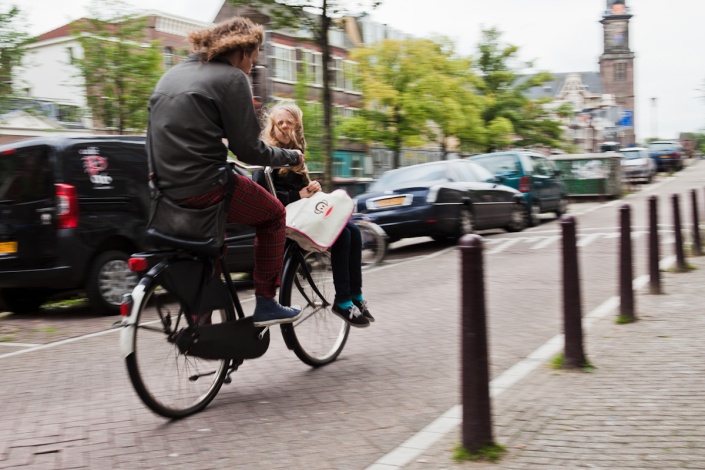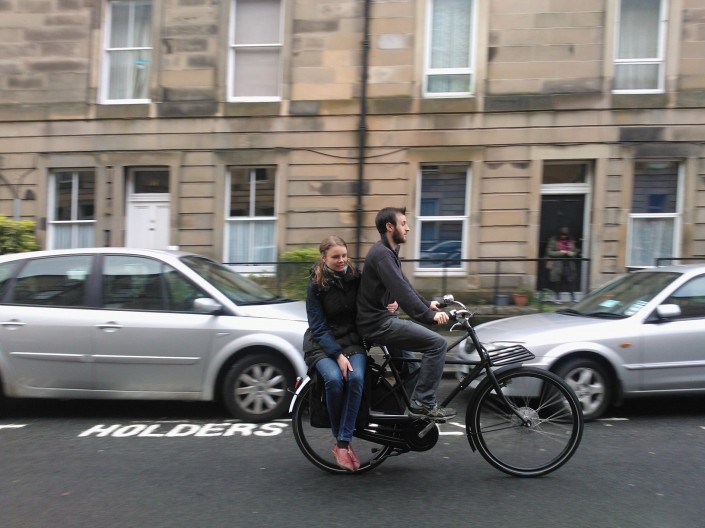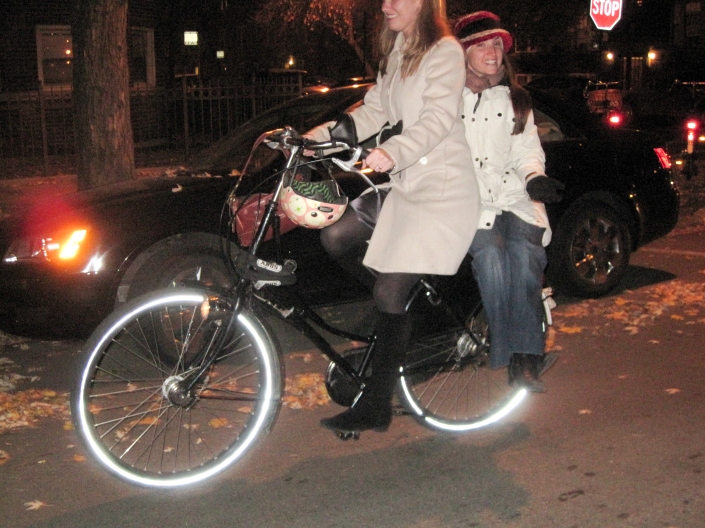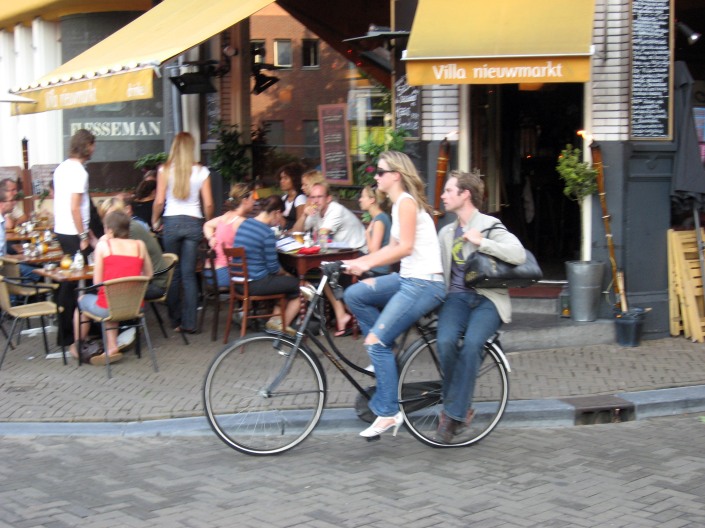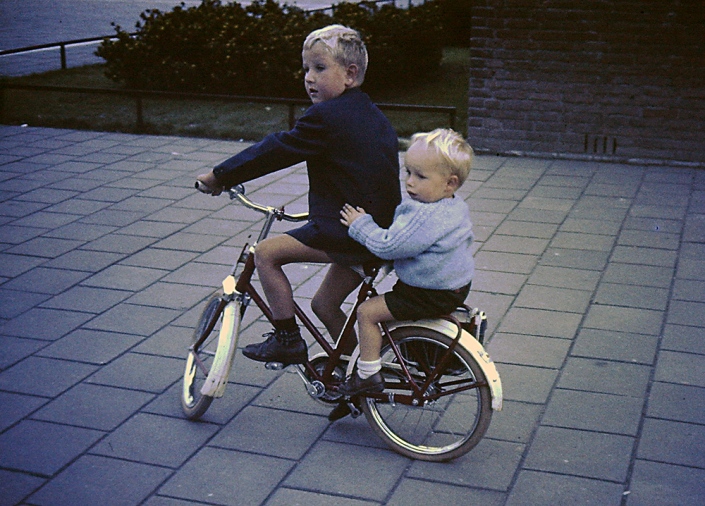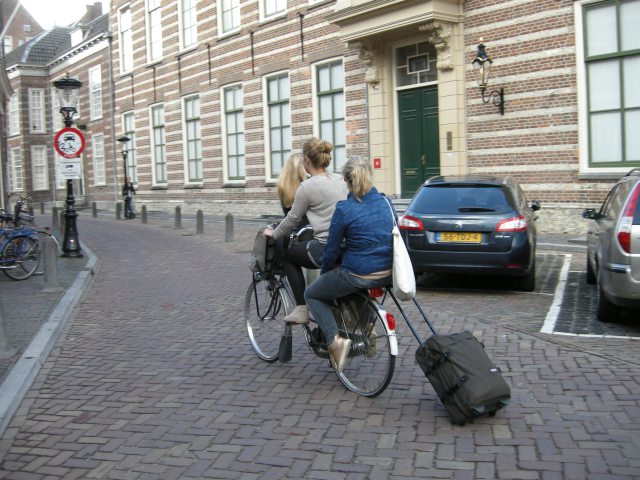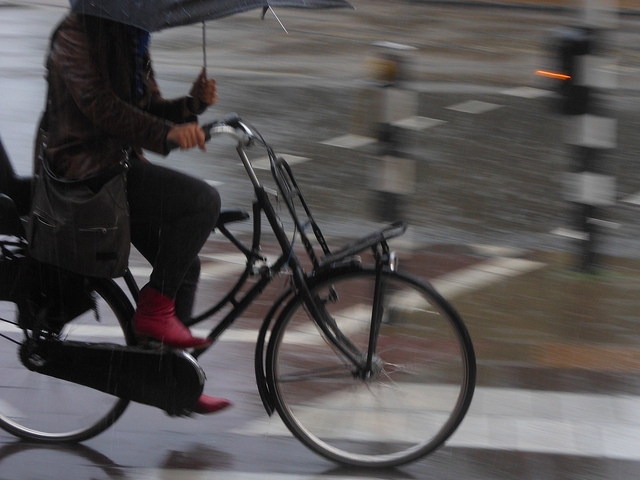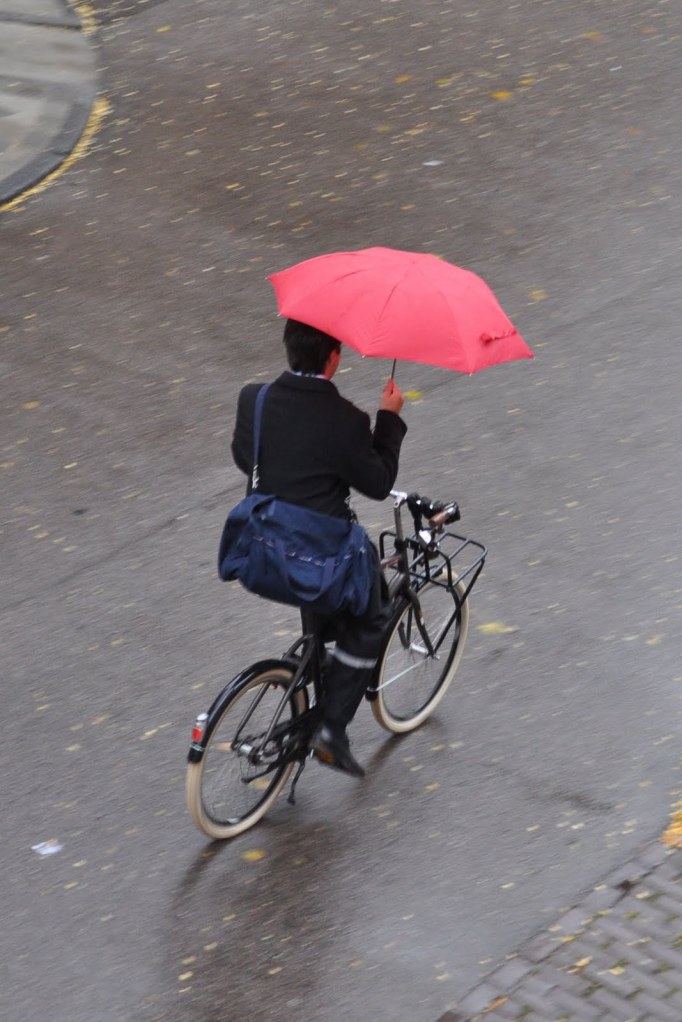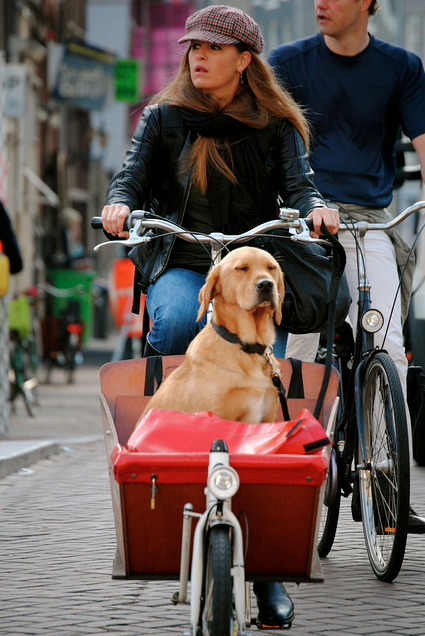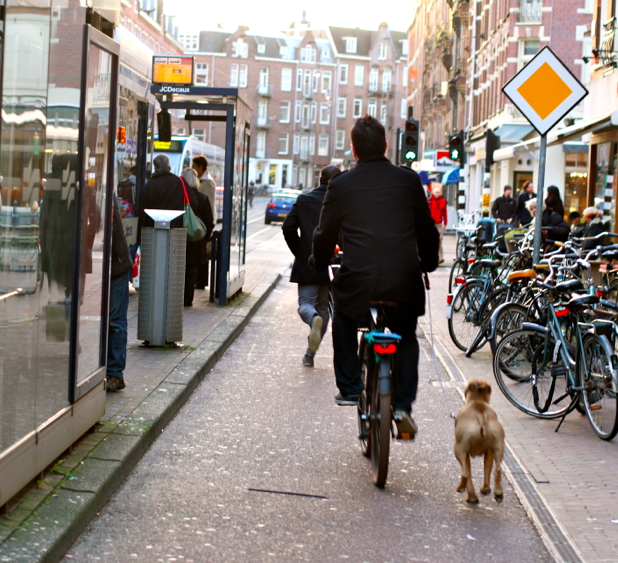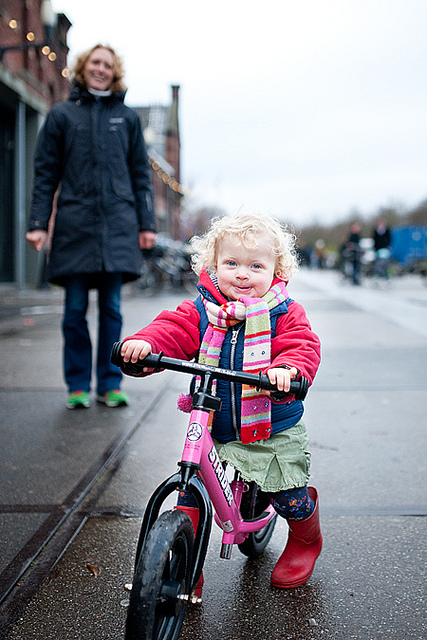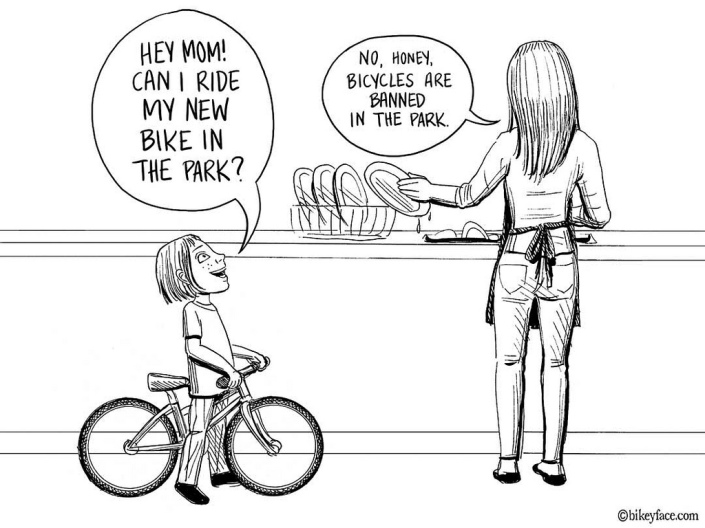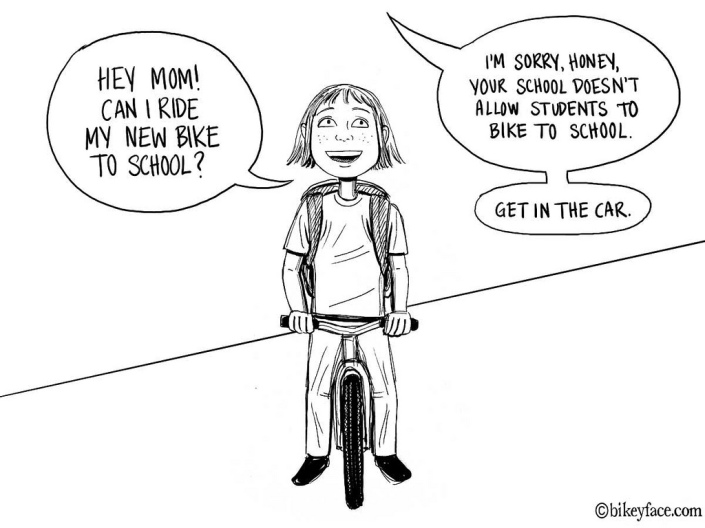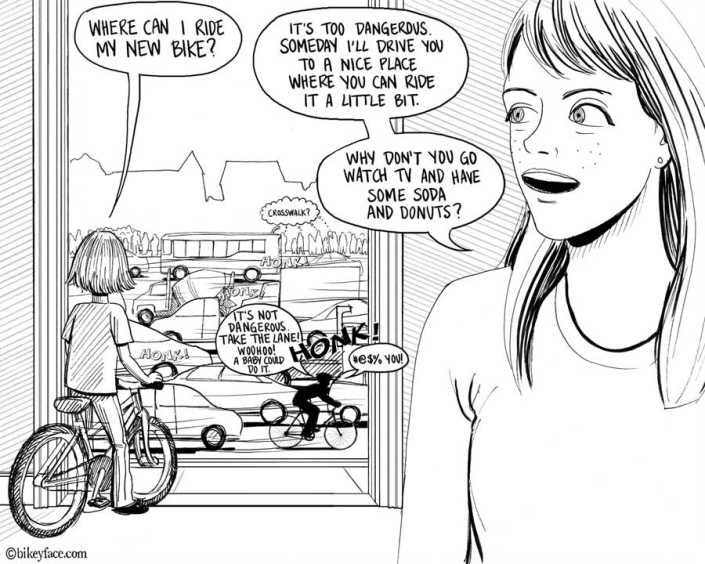Alternatives to Cars
Favourite Quotation and Favourite Bike
As any bike rider will know, friends and family love to buy you books about bicycles and cycling. As a child of the internet age, I am particularly appreciative of these gifts because they so frequently open my eyes to things that I might not have otherwise encountered. From the whimsy of the NYC Bike Snob series and the semi-serious rules of the Velominati, to the wonderful and captivating histories like Pete Jordan’s Story of the Amsterdam Cyclist, there is certainly no shortage of quality bike-related literature. I must admit that I am also quite partial to the occasional illustrated book as well; here, though, the pictures do the talking, and they can give fascinating insights into the dreams of designers and the lives of riders.
In spite of the wealth of literature, there is, however, one passage that stands head and shoulders above the rest in terms of the way that it captures how I feel about riding a bike. The passage I’m referring to is succinct and refined, and even contains a politely restrained little jab at motor vehicles. It comes from Elizabeth West’s Hovel in the Hills (1977), and goes as follows:
When man invented the bicycle he reached the peak of his attainments. Here was a machine of precision and balance for the convenience of man. And (unlike subsequent inventions for man’s convenience) the more he used it, the fitter his body became. Here, for once, was a product of man’s brain that was entirely beneficial to those who used it, and of no harm or irritation to others. Progress should have stopped when man invented the bicycle.
The bicycle has, of course, been reinvented to varying degrees since the first recognisably familiar double-diamond ‘Safety Bicycle’ appeared in the 1880’s. And this is probably a good thing…

The subtitle of West’s book is ‘An account of the Simple Life’, and she clearly believes that the humble bicycle is a natural part of a streamlined existence. That said, however, modern times call for modern bikes, and in a world of cars we need a bicycle that is more than just a dandyhorse-style toy for the posers to pootle about on. What is called for is a rugged transporter; something fast and strong, but also comfortable and easy to use.
What is called for is something like this:
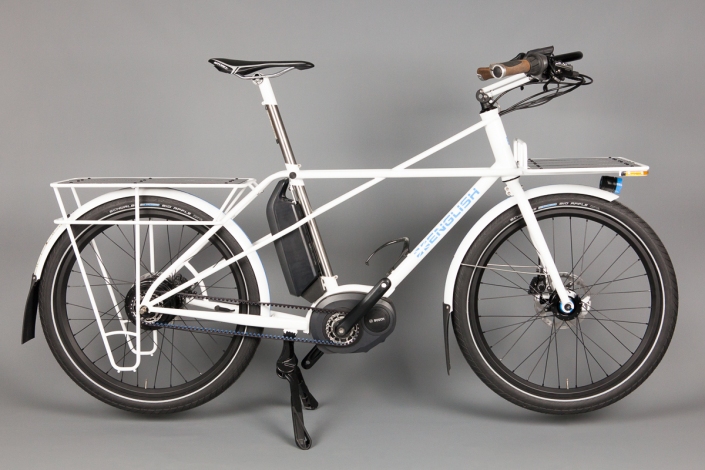
This is a handmade custom build by Rob English. Dubbed the No-car-kitty-cargo, it really has everything that a good cargo bike needs to serve as a wholly adequate replacement for a car. In terms of design, it is undoubtedly complicated, but without ever having seen one in the flesh I can be fairly certain that the ride would be both simple and pleasurable. Big tyres, intuitive gears, automatic electric assist, carbon belt-drive, intelligent weight distribution – all these parts come together in a beautiful harmony to make this bike probably the most advanced of its kind in the world. It takes an independent pioneer like Rob English to bring together so many different elements and blend them so expertly to produce such a feat of engineering.

As a handmade bike, it doesn’t really have a price tag, as such. However, you can expect to pay upwards of $10,000 for something like this (if you are prepared to join the 3 year waiting list, that is). If I had the readies, I’d put my name down immediately, but sadly the modest stipend of a PhD student doesn’t stretch quite so far. *inconsolable weeping*
Some of you might be curious as to how I can be so sure that a bike I have never ridden is really worth raving about. Well, apart from my faith in English’s workmanship, and the no-expense-spared approach to components that he is using, I actually ride a bike very similar to his one already. In fact…
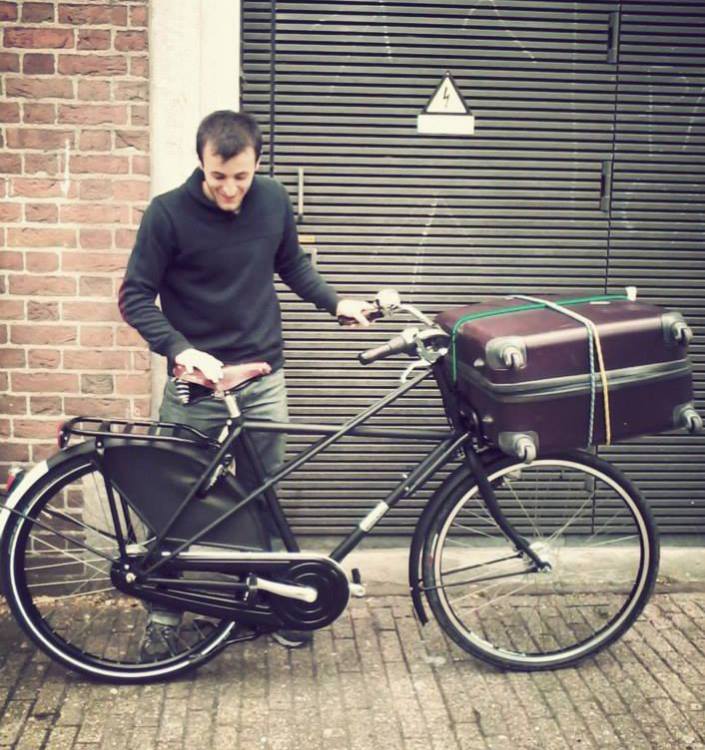
Of all the bikes that I have owned, this one is by far the greatest. I intend to do a thorough analysis of what makes this bike excellent in due course, but for now it will suffice to say that Rob English has determined the very few ways in which it could be improved and has built them into what I believe to be the ultimate city bike. In short, his bike has a greater load capacity, elegantly integrated electric assist, wider tyres, titanium tubing (in places), and a carbon belt drive. The only places where I believe my bicycle to have the edge are in the Brooks B67 saddle and matte paint job departments…
In conclusion then: while I admire Elizabeth West’s wholehearted endorsement of the humble bicycle, I am pleased to see that bicycle technologies and innovations are still keeping up with the times, and still providing practical, safe, healthy, and environmentally-friendly transport solutions for millions of people around the world, even after all these years.
Is your bicycle safe for child transport?
Kids and bicycles go together like chocolate-chips and cookies, but there are few things worth bearing in mind before you saddle up with your wee one this summer…
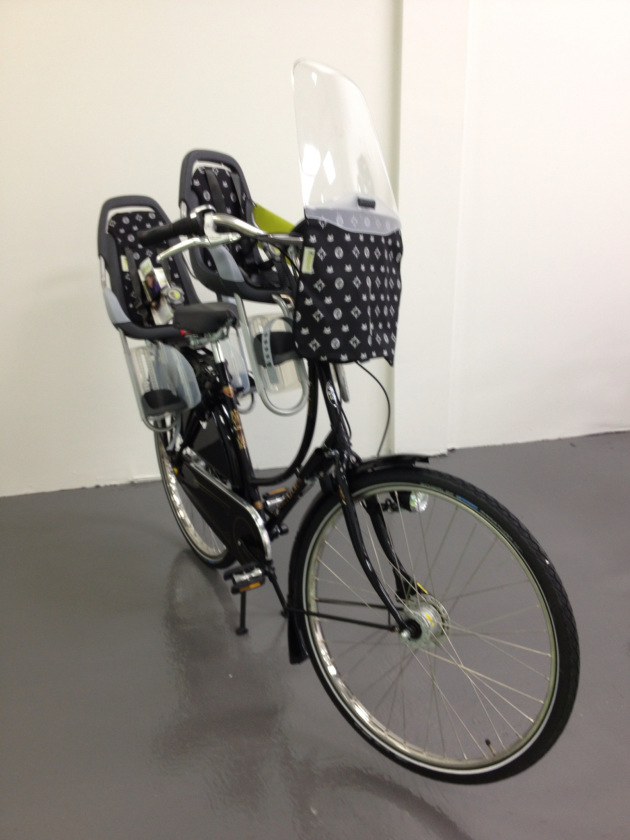
We get a lot of questions regarding kids bicycle seats, and in many cases, we get photos of various bicycles and whether or not you can fit a bicycle seat on the bicycle. We never comment on the actual bicycle we don’t sell.
Every bicycle is engineered or designed with a certain purpose in mind, and all frames have a weight capacity. Road bikes are built to be lighter, in order to go faster. Mountain bikes are built lighter with better shock absorption to go down mountains. They all have their purpose and they are all great for the purpose they were built for, but not all bicycles can do everything!
Before thinking about buying a new bicycle or a kids bicycle seat for your family rides, do a little research.
1) When it comes to a child seat, always find out from the bicycle manufacturer what the weight capacity…
View original post 119 more words
Dutch style transport in Edinburgh
me and Kristina, setting the trend in Edinburgh
It is great to see Dutch style transport in use in Edinburgh
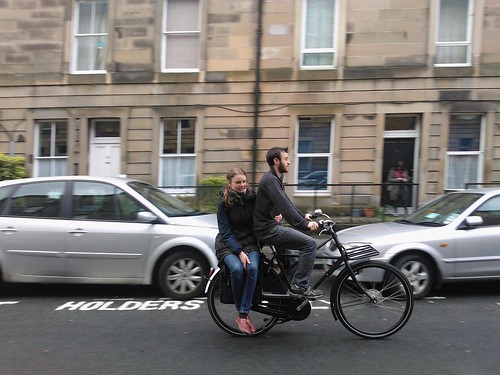
by harrywalton1.
Liveable Cities and Desire Lines: Urban planning perspectives from Denmark’s Bicycle Ambassador
The focus on re-establishing more liveable cities continues unabated. The primary problem however is that 85 years of traffic engineering revolving around the car has failed miserably. It’s time for modern thinking, and good design can help.
Historically, streets were human spaces, so why don’t we still design them in accordance with the desire lines of their citizens? The following talk, given by Mikael Colville-Andersen, makes the case for using basic design principles instead of engineering as the surest route to developing thriving, human-centred cities.
Colville-Andersen is an urban mobility expert and CEO for Copenhagenize Consulting. He is often called Denmark’s Bicycle Ambassador but has learned the hard way that this title is a dismal pick-up line in bars.
Colville-Andersen and his team advise cities and towns around the world regarding bicycle planning, infrastructure and communication strategies. He applies his marketing expertise to campaigns that focus on selling bicycle culture and bicycle transport to a mainstream audience as opposed to the existing cycling sub-cultures in particular with his famous Cycle Chic brand. Colville-Andersen gives talks around the world about bicycle culture, design, and social media.
Those who are familiar with TED talks will know that they are synonymous with quality and intelligent commentary. My favourite bit of this particular talk begins at 5:27 and considers Copenhagen’s approach to the “desire lines” of its citizens. After watching this segment, just think about how other cities around the world might be quicker to punish (rather than observe) their citizens in cases where they routinely flout the law – which approach do you suppose is better?
Why should non-cyclists support measures to boost cycling?
Video Posted on Updated on
This article (Kaya Burgess – The Times) describes the multifarious benefits of investment in cycling for all sorts of different groups in the UK. In what follows below, I intend to summaries and illustrate just a few of these benefits.
Motorists, for instance, would benefit from fewer traffic jams and less conflict with cyclists. Even Top Gear presenter and general motor-mouth Jeremy Clarkson has praised cycling as a way of getting around. He last year described Copenhagen’s cycling culture as “fan-bleeding-tastic” and said: “Now I know that sounds like the ninth circle of hell, but that’s because you live in Britain, where cars and bikes share the road space. This cannot and does not work. It’s like putting a dog and a cat in a cage and expecting them to get along. They won’t, and as a result London is currently hosting an undeclared war. I am constantly irritated by cyclists and I’m sure they’re constantly irritated by me.”
People who commute by train and by bus will also benefit if more people took up cycling, as the intense pressure on the public transport system would be eased.

As child obesity soars in the UK, parents and children will benefit from better infrastructure as cycling to school becomes an option again. The more people who cycle, the safer the streets become, and thus more people will be encouraged to take up cycling . With more than 2/3 of car journeys in the UK being less than 5 miles, most of the driving that people do is completely unnecessary anyway. The school run needn’t be the stress that it has become.
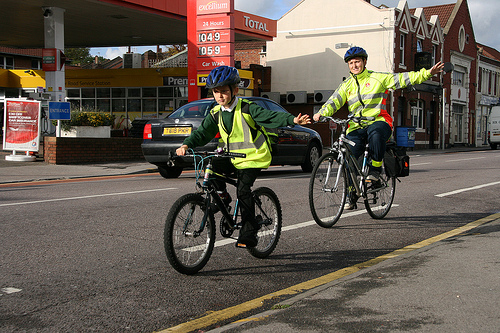
Ordinary adults will benefit from the regular exercise as well. Official advice recommends taking 150 minutes – or 2½ hours – of physical activity per week, but we do not always have the time – or inclination – to get down the gym or go for a jog after a long day or long week of work. Building cycling into a person’s daily routine is a brilliant way of nomalising the activity and incorporating exercise into their lifestyle.

Taxpayers will also benefit from investment in cycling. The NHS spends around £5 billion each year on tackling preventable diseases exacerbated by inactivity, including type 2 diabetes, heart disease and strokes. Around £16bn is currently being spent on the Crossrail project in London and a further £3bn on upgrades to the A9 road in Scotland. Health experts told the Get Britain Cycling inquiry that investing in cycle provision is by far the most cost-effective form of transport spend, recouping £4 in healthcare savings for every £1 invested.
Investing in cycling is also good for businesses and employers. Not only does a manager get a healthier and more alert workforce, but research in New York has shown that the introduction of cycle lanes led to a 49 per cent increase in retail sales. In terms of parking, bikes take up a lot less space than cars, so it follows that bikes can carry more potential customers than cars can.
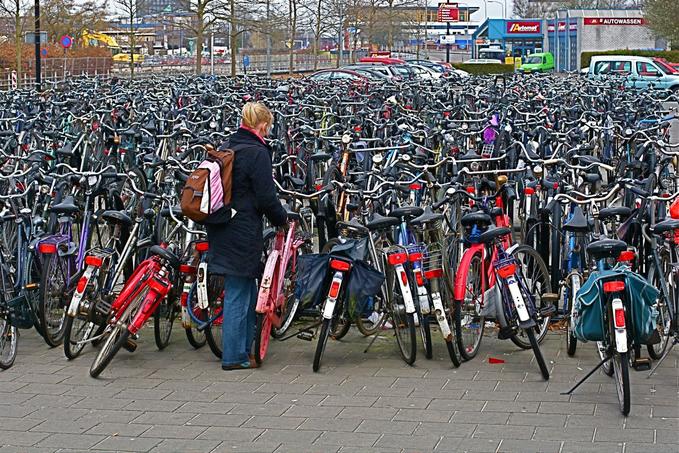
As a final point, the article notes that cyclists would also benefit from improved cycle infrastructure. It might seem like an obvious point, but around 2 per of traffic on Britain’s roads is made up by people on bikes, and as this figure grows the infrastructure will need to grow with it. For instance, of all vehicles crossing bridges over the River Thames in London at rush hour, more than half are bicycles – in spite of this fact the cycle lanes (which are shared and often blocked by buses) are at best only a third of a lane in width. It really is time the Government took cycling seriously.

I really liked this article, but it did miss out some other key groups who would benefit from a more Dutch-style cycling infrastructure, as illustrated in the following video:
Britain’s new cycling minister calls for more ‘everyday’ riders
Link Posted on Updated on
Britain’s new cycling minister calls for more ‘everyday’ riders
Cycling is such a part of the lifestyle in The Netherlands that most Dutch people don’t even think of themselves as ‘cyclists’.
Indeed, cycling is a perfectly normal activity, and so it is about time that we started treating it as such. This article from the Guardian’s bike blog describes how Britain’s cycling minister wants to see more ‘everyday’ riders on the road – the kind who have baskets on their bikes and just pootle around in normal clothes (i.e. not the usual lycra brigade).
It’s a nice idea, certainly, but I would like to highlight the key issue raised around of the middle of the piece:
“Campaigners […] point out that making cycling an everyday activity for people of all inclinations and ages generally requires years of investment in segregated cycle lanes, bike-safe junctions and other infrastructure.”
Without the right infrastructure to protect them, ‘everyday’ riders would be like lambs for the slaughter in cities like London. The minister for cycling clearly has his work cut out for him if his vision is to be realised.
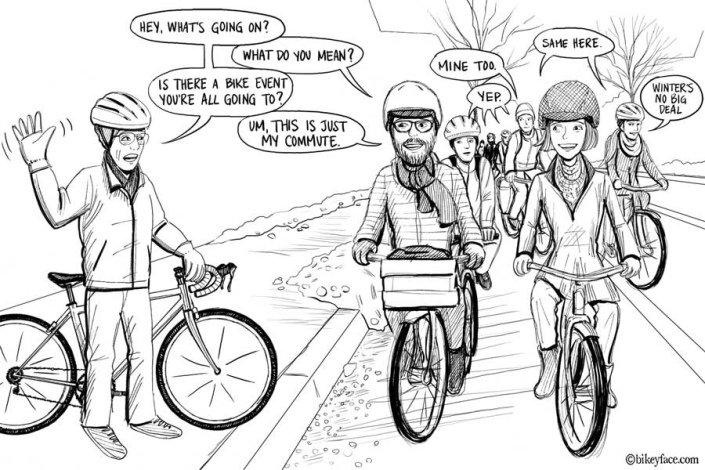
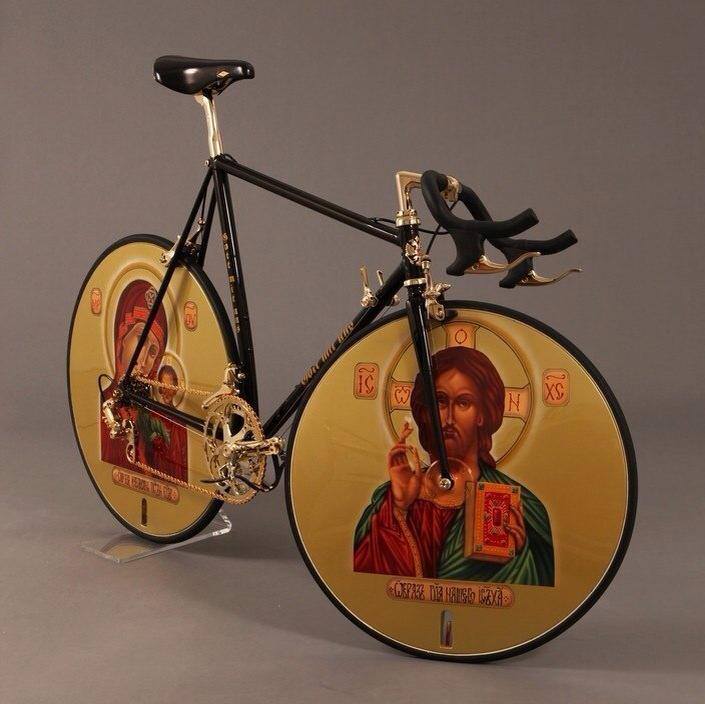
Cycling is not (intrinsically) dangerous
2013 saw many articles written under titles referring to the ‘dangers of cycling’. A few random examples can be found here, here, here, and here. This one even talks about the ‘terrors’ faced by cyclists on the road.
Indeed, cycling can be a dangerous activity, but this is not because cycling itself is dangerous…
For instance, it isn’t dangerous to cycle without a helmet
It isn’t dangerous to cycle without hi-viz
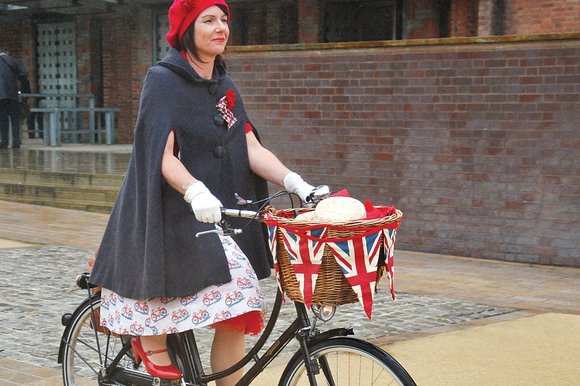
It isn’t dangerous to cycle with a passenger…
…no matter what age you are!
Even a couple of passengers (and a suitcase) is no big deal
Cycling with kids isn’t dangerous either
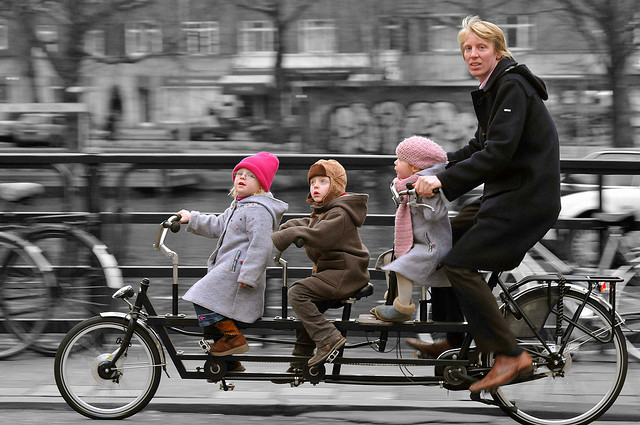
and it isn’t dangerous to cycle with an umbrella
It certainly isn’t dangerous to cycle next to your friends
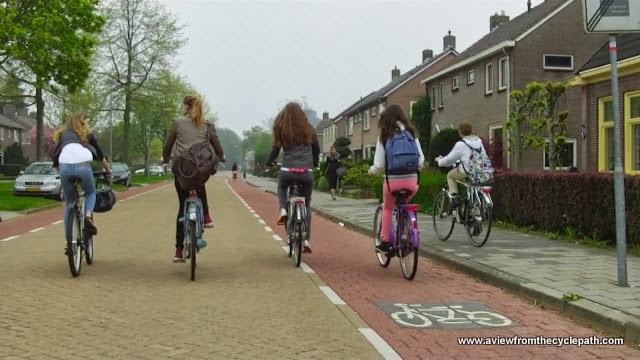
Even four-legged friends are safe to ride with.
Whether you’re a little bit older…

…or a little younger
…cycling itself is not a dangerous activity.
What these photographs illustrate is how the physical environment affects the relative danger of riding a bike. Many of the pictures also show how good infrastructure is the key factor in determining whether or not cycling is actually safe.
As we move into 2014, I am hopeful that governing bodies in the UK (and elsewhere, for that matter) pick up on the merits of cycling and do what is needed to protect people who ride bikes. At present (and from my perspective), city dwellers face an unappealing trilemma when deciding upon transportation; they can either:
1. Contribute to the city’s pollution and congestion by paying through the nose for a car (+driving licence/insurance/MOT/VED/petrol/parking etc.).
2. Pay to take crowded/crappy (and notoriously unreliable) public transport.
3. Ride a bike but risk their lives by sharing the road with heavy/powerful/fast moving motor vehicles.
If a person is able to ride a bike (i.e. if their health permits it), then it should be in everybody’s interest to support them. Biker riders take up less space on the roads, and so there is less congestion for everyone else; they are not pumping out pollution into the air that we all have to breath; they are exercising their bodies and so easing pressure on an NHS that is currently strained by an obesity epidemic; they aren’t damaging the roads to nearly the same degree that other vehicles do (thus saving tax-payers money); they don’t run people over (and if they do, injuries are usually minor); and last but not least, motor-vehicle dominated cities are noisy and unpleasant places, and so bikes offer a quiet and civilised remedy to this.
I think that cycling is brilliant, not just for the bike rider but for the world. I intend to keep up the pace this year with my campaigning, and I hope to keep you updated with any developments/innovations that might be of interest.
All the best
New bike for Christmas? Sorry kid…
The following comic comes from bikeyface and illustrates a sad truth that many of us* know all too well…
Kids love cycling, and it’s such a shame that there is so little safe space in our cities where people can just pootle around recreationally. Vondelpark in Amsterdam is one of those rare places where people can go just ‘for a spin’.
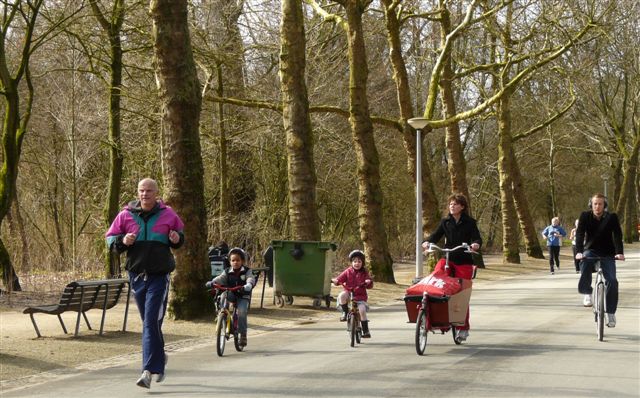

*those of us who don’t live in The Netherlands, at least…
Space for cycle lanes – it can be found!
Whenever I tell people about my dream of having some decent cycling infrastructure in the UK, I am frequently met with the same point about there not being enough space on British roads. The general feeling is that roads are already too narrow, and that there simply isn’t any room to accommodate the type of segregated cycle lanes that work so well on the continent.
In opposition to this, I would like to present you with a group of photos taken from Google Streetview. In the left column you have shots of roads/junctions in the UK, and in the right column you have almost identical shots of places in The Netherlands. The point of the side-by-side comparison is to show how space is used differently, and how the Dutch so sensibly choose to separate pedestrians and cyclists from cars and HGVs. The streets are so similar that they could almost be before and after photos…
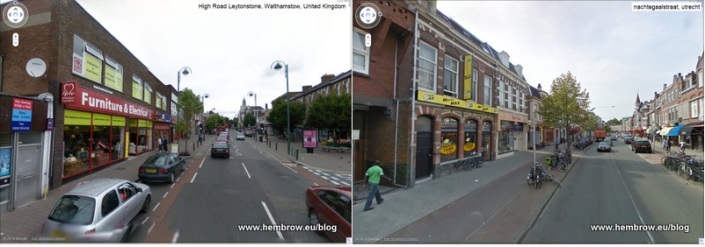
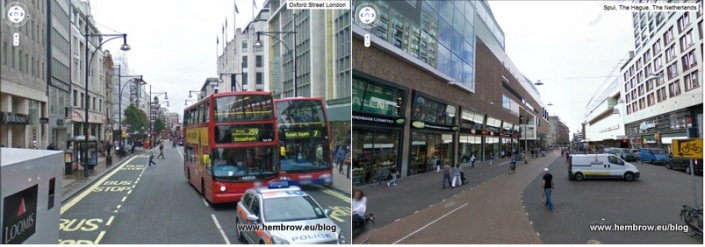
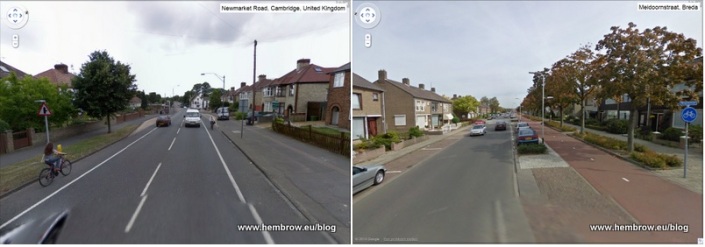
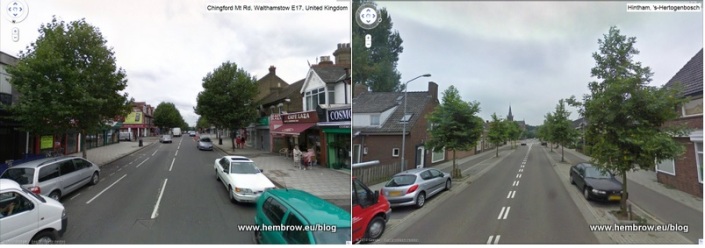
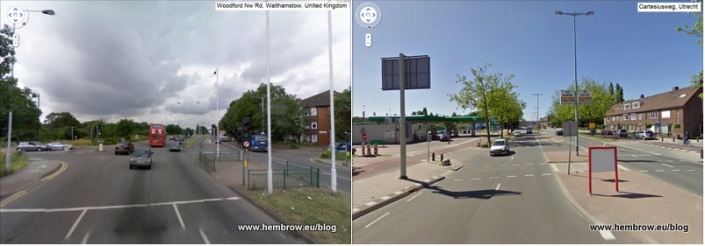
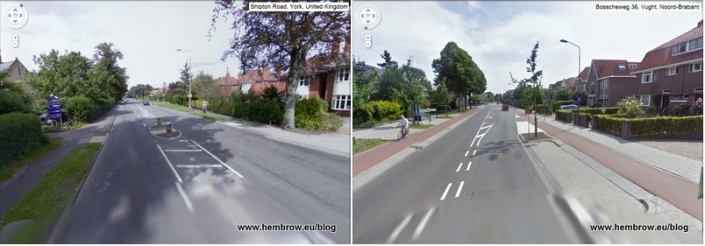
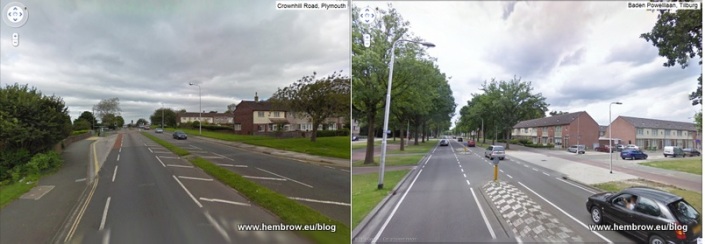
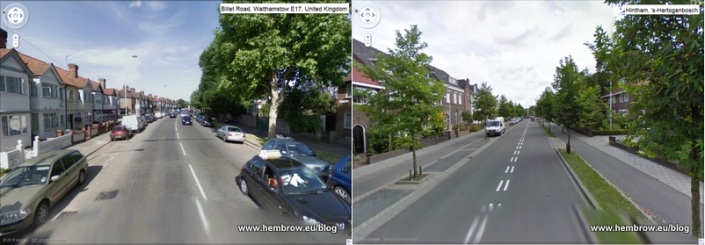
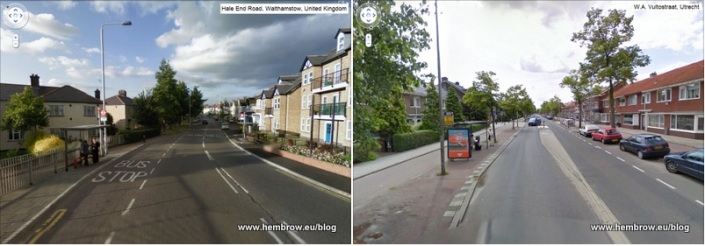

In each case, the cycling provision in the UK is rubbish or non-existent, while that provided on a similar street in The Netherlands offers a far superior cycling experience. Of course, if cycle lanes were better then more people would cycle, and if more people were riding bikes then there would be fewer cars on the road and so less congestion and less pollution. Everyone benefits, right?
The following video explains how the Dutch got their cycle paths, and how their cities made the transition from being car-centric to being more bicycle friendly.
What the Dutch have achieved is truly remarkable, and this is why I always hold them up as the best example for the UK to follow. They are the only country in the world able to boast the fact that more than a quarter of all their journeys are made by bike, and it would be my dream come true if we could achieve this feat in the UK.
Related articles
- Making cycle lanes safe (cyclingnelly.wordpress.com)
- Crosspost: Cyclists and pedestrians as ‘hazards’ for motorists. #wordlturnedupsidedown #takecaregtrmcr (manchesterclimatemonthly.net)
- No, it’s not the narrowest cycle path in Britain! (cyclingnelly.wordpress.com)
- Only 10 fines for illegal cycle lane parking (belfasttelegraph.co.uk)
Dinosaur MPs on Britain’s Transport Committee
Link Posted on Updated on
Dinosaur MPs on Britain’s Transport Committee
For the many of you fortunate enough to not view the committee’s near two-hour session about cycle safety on Monday afternoon, I can tell you that there are scarcely enough words to describe how disheartening and shambolic it was. To give you a flavour of one journalist’s reaction, follow this link to see a collation of running tweets from the event.
The session followed the recent deaths of six cyclists in London and saw the 11-member committee first quiz a series of cycling representatives and police, then a trio of bigwigs from the road haulage world, along with Andrew Gilligan, cycle adviser to London’s mayor, Boris Johnson, and an expert from the Transport Research Laboratory.
For the most-part, it seemed as if the MPs were concerned with minor issues. For instance, Sarah Champion (Labour MP) wondered whether helmet use could be made compulsory. How a bike helmet is supposed to help someone crushed by an HGV is something that we might wonder in response… The headphones issue was also raised.
Following this, Jason McCartney (Tory MP) asked if there was a war going on between cars and bikes. His party colleague, Martin Vickers, then asked – and he was being entirely serious – if the panel felt cyclists should “contribute” financially to the upkeep of roads. Yes, that’s right. The road tax question, the litmus test for someone who not only doesn’t understand the very basics about cycling policy but hasn’t the barest minimum of intellectual curiosity about it. Silly enough in a pub conversation. For an MP, let alone an MP on the transport select committee, let alone an MP on the transport select committee discussing cycling, it’s unforgivable.
An extract from a Guardian article on the subject encapsulates some real truths about how cycling issues are addressed by the people in power:
“…when it comes to cycling policy in Britain, we remain, for the most part, in the age of the dinosaur. The odd politician talks an occasional good game on bikes, but look at too many mainstream MPs and we’re right back in the 1960s, where bikes are a toy, or a faddish “pursuit”, perilous and mistrusted, while all must lie down in homage to “the economy”, a narrowly-defined set of interests with motorised pistons beating at their heart.”
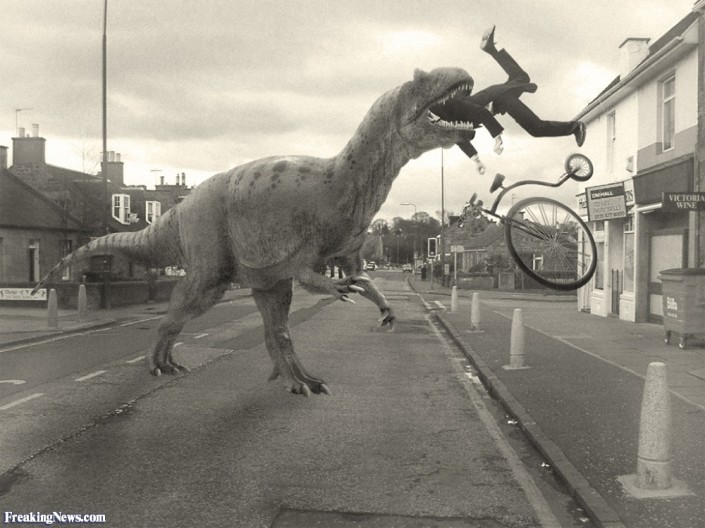
Jim Dobbin (Labour MP) then proceeded to regale the committee with a series of anecdotes about misbehaving cyclists and scratched car paintwork before suggesting that currently cycle safety woes could be addressed by requiring cyclists to register themselves and their bikes, and to pass proficiency tests in order to gain a cycling licence.
Although many people may believe that Dobbin’s prescription is a good one, it is worth remembering that not a single country on this planet implements these things for the simple reason that they massively curtail bicycle use. Bicycles don’t have the capacity to be the killing machines that cars and lorries sometimes are, and cyclists don’t produce CO2 or damage the roads to the same degree as motor vehicles; requiring them to be registered and licensed (presumable at some cost) seems a preposterous and misguided contribution to a meeting about cycle safety. And while cycling proficiency is a reasonable issue, no one at the committee meeting seemed aware of the bikeability scheme.
Part two was possibly even more depressing still. The MPs, who had been quite interrogative towards the cycle groups (albeit mainly on irrelevancies) gave the haulage group representatives a far easier time. Jack Semple, policy head of the Road Haulage Association, was left utterly unchallenged when he repeatedly singled out cyclist behaviour as the reason for them being killed by lorries; an assertion for which there is, as far as I understand, no evidence.
What was missing from the committee meeting was an acknowledgement of the fact that cities are changing places. Whereas once they competed on things like skyscrapers and parking spaces, the most desirable cities in the world are now places where there is an emphasis on liveability – a more human-centred approach. People don’t want to live with urban motorways and the noise, congestion, and pollution that they bring with them. The nicest cities are more pedestrianised, with pavement cafes, and safe, communal spaces. They also prioritise (and even incentivise) walking and cycling in such a way as to make them more convenient than driving (just look at Groningen in The Netherlands for the perfect example).
To illustrate this point, it is worth noting that there are three big annual lists of the world’s most liveable cities. Not one of them features anywhere in the UK.
Things clearly need to change, and the mass extinction of political dinosaurs seems to be a necessary first step.

